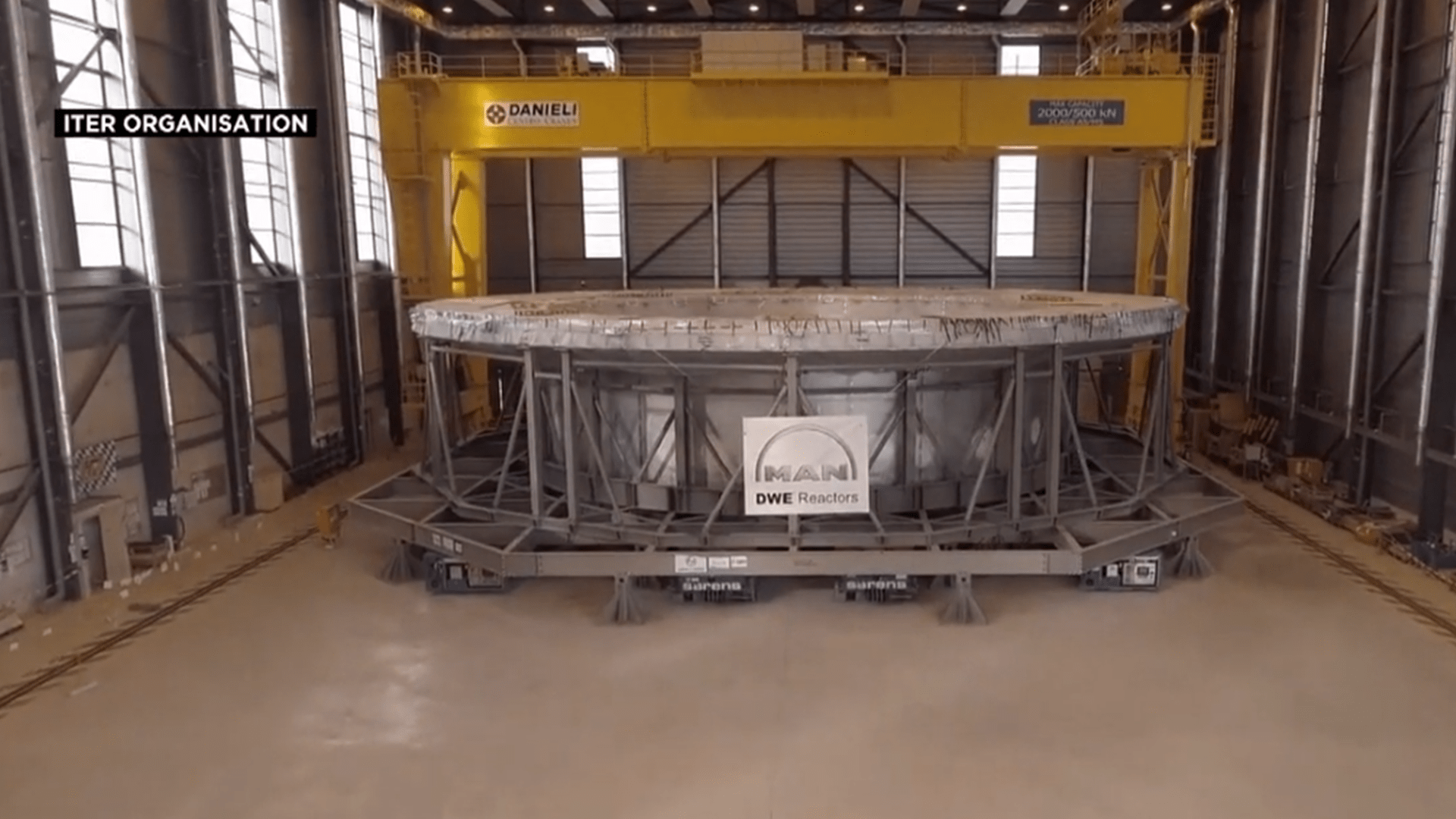The assembly phase for the world’s largest nuclear fusion project started on Tuesday with French President Emmanuel Macron hailing the energy programme as “a promise of peace”.
The International Thermonuclear Experimental Reactor (ITER) aims to build the world’s largest tokamak — an experimental machine designed to harness the energy of fusion.
Fusion is a nuclear reaction that powers the Sun and the stars and is a potential source of safe, non-carbon emitting and virtually limitless energy, the ITER website states.
Temperatures at the sun’s surface reach nearly 6,000°C and at its core 15 million°C. In the ITER Tokamak, temperatures will reach 150 million°C.
The machine is to weigh 23,000 tonnes and will have a plasma volume of 830 cubic metres, far higher than the tokamaks operating today which have maximum plasma volume of 100 cubic metres.
It will be built in southern France with parts and funds provided by each of the eight members. These are China, the EU, India, Japan, Korea, Russia, the UK and the US.
‘Overcome our differences’
Macron said during the ceremony to mark the start of assembly that “ITER is a promise of peace”.
“There are moments when the nations of the world choose to overcome their differences to meet a particular moment in history. The decision to launch ITER, in the mid-2000s, was one of these moments,” he added.
Chinese President Xi Jinping said in a statement that “the ITER project — one of the most important international scientific collaborations — embodies the human desire for the peaceful use of fusion energy.”
Meanwhile, Japanese Prime Minister Shinzo Abe said: “I believe that disruptive innovation will play a key role in addressing global challenges, including climate change, and realising a sustainable carbon-free society.”
A 40-year journey
ITER was set in motion at the Geneva Superpower Summit in late 1985 by the EU, Japan, the Soviet Union and the US. Conceptual design started there years later with the final plans approved by the member states in 2001.
South Korea, China and India joined the programme in 2003 and the building site was chosen two years later.
Each member was tasked with procuring components and systems. The central solenoid — a type of electromagnet — is a collaboration between the US and Japan; divertor manufacturing and testing were divided between Europe, Russia and Japan; India and the US joined efforts to produce the cooling water systems; the blanket system is to be produced by China, Europe, Korea, Russia and the US. The fabrication of the ITER vacuum vessel sectors was divided between Europe and Korea.
European members are providing 45 per cent of the estimated €13 billion required with the remaining countries each covering 9.1 per cent.
Construction is expected to be finalised in 2025.
Euronews / Balkantimes.press
Napomena o autorskim pravima: Dozvoljeno preuzimanje sadržaja isključivo uz navođenje linka prema stranici našeg portala sa koje je sadržaj preuzet. Stavovi izraženi u ovom tekstu autorovi su i ne odražavaju nužno uredničku politiku The Balkantimes Press.
Copyright Notice: It is allowed to download the content only by providing a link to the page of our portal from which the content was downloaded. The views expressed in this text are those of the authors and do not necessarily reflect the editorial policies of The Balkantimes Press.

